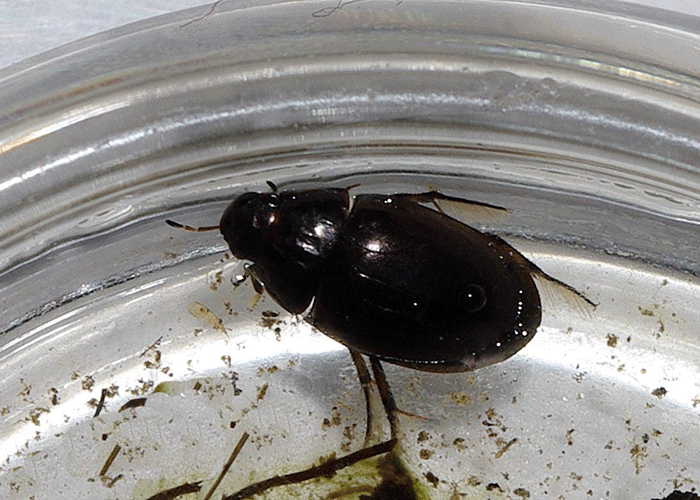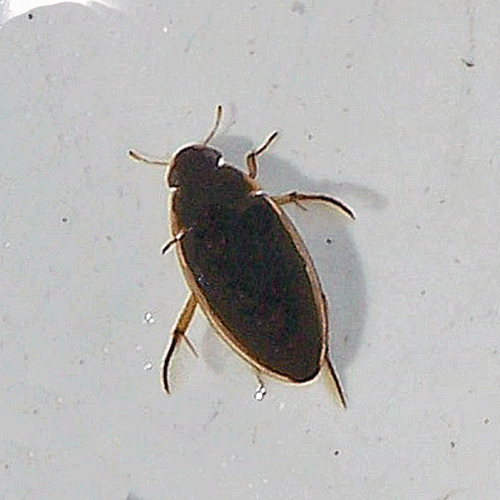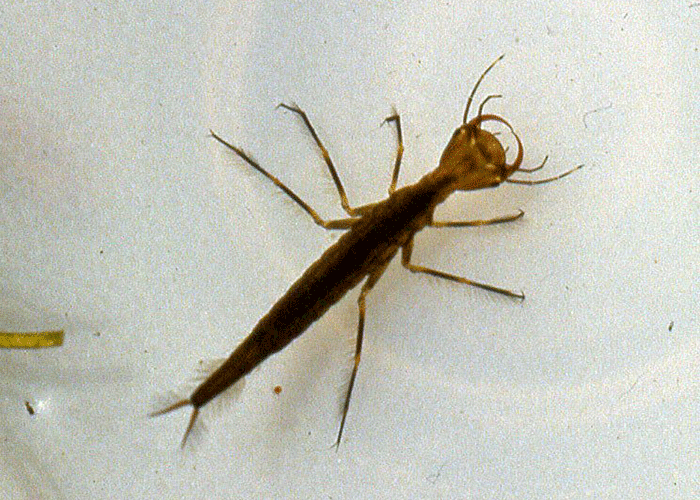Salutations, BugFans,
Water Scavenger Beetles
BOTW hasn’t plunged underwater for several months now, but in this episode we will get a chance to get our collective gills wet again. Water Scavenger beetles (WSB) are hefty beetles (some measure more than 3 inches) that are often mistaken for the Dytiscids or Predaceous Diving beetles (PDBs) of previous BOTW fame. Indeed, the two share classification in the beetle Order Coleoptera. Voshell, in A Guide to Common Freshwater Invertebrates of North America, says that beetle comes from the Old English bitula—to bite—a reference to the strong jaws of adult beetles.
They also share the same freshwater ponds and quiet stream edges (although WSBs like their weedy, algae-choked water a bit warmer than PDBs do). What they don’t share is a lifestyle. Although WSBs and their offspring do prey on their smaller aquatic neighbors, the adults also scavenge, resulting in a food pyramid that includes decaying vegetation and dead animal tissue. They are, in turn, eaten by fish and targeted by many parasites. North America hosts about 200 species of WSBs, including an alien/introduced species that makes itself at home in dung, where its larvae eat maggots.
The usually-black WSBs have a more “domed” shape than the usually-black PDBs, and their flat, ventral surfaces often sport a keel. Swimming involves alternate strokes (left-right-left-right) of their flattened, hairy, second and third pairs of legs, in contrast to the PDB’s oar-like strokes. Their swimming may be “clumsy” compared to the more streamlined PDBs (scavengers don’t need speed or maneuverability), but they are good flyers. According to Eaton and Kaufman, in the Field Guide to Insects of North America, some species of WSB can squeak by rubbing their abdomen against the underside of the wing covers.
Its nick-name—silver-beetle—is a nod to the film of air bubbles that typically covers its flat ventral surface. While a PDB breathes by backing its rear end up to the water’s surface, a WSB breaks through the surface film with its “un-wet-able” antennae, which form a funnel through which air is transported. Oxygen stored a space under its elytra (hard wing covers) is connected to air trapped in a layer of thick hairs on the underside of the body.
Eggs are laid in a cocoon-like case that is attached to aquatic plants or left to float like a raft. In The New Field Book of Freshwater Life, Elsie Klots says that the egg case of one genus includes a vertical “mast” that extends above the water’s surface. The mast may be concerned with respiration, but it may also be an escape hatch for larvae (escape being vital in a group whose young hatch from eggs within a case and immediately start chowing-down on their siblings). A case may hold 100+ eggs at the start, but cannibalism reduces the number of larvae that live to exit.
WSB larvae are described as “sluggish” and are found crawling on the pond floor or climbing on underwater vegetation. The larvae is a “couch-potato” version of the sleek PDB larvae/ water tigers (pictured) (they sometimes share the “water tiger” moniker). WSB larvae often have paired, gill-like structures protruding from the sides of their abdomens. Their feeding category is “engulfer-predator;” they use their hollow jaws to suck out the juices of their prey. Their food-list includes their brethren; they love mosquito larvae but will go after mini-fish and so are an unwelcome addition to a koi pond. Larvae back their abdomen up to the water’s surface and take in air through spiracles (pores) at its tip. They spend a month underwater as larvae and about 12 days pupating in a cell in moist soil. Adults sometimes hibernate and can be found in the water all year.
Every fifth living thing is a beetle.
The BugLady


